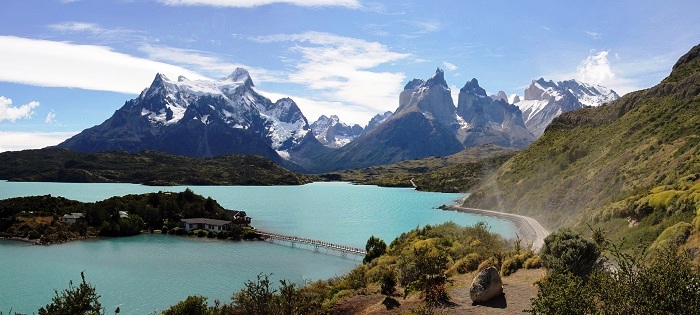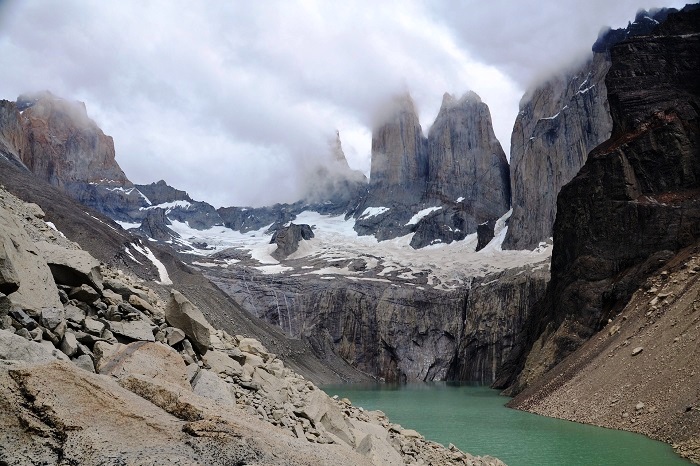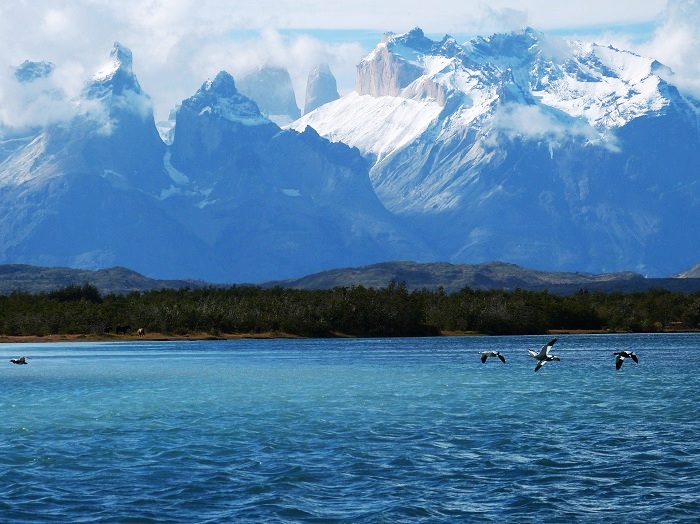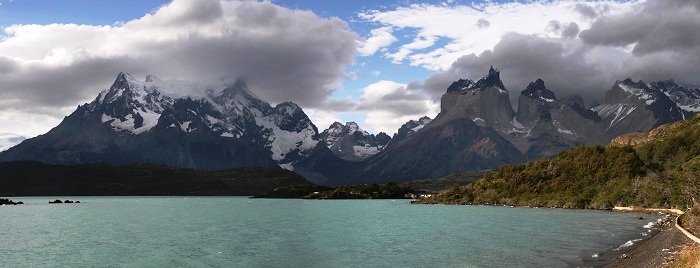Torres del Paine National Park is the land of legendary beauty which is surrounded by spectacular sights of nature. This national park is a kind of paradise encompassing mountains, glaciers, lakes, and rivers in southern Chilean Patagonia. This national park is located in the southernmost and largest region of Chile called Magallanes and Chilean Antarctica. It is one of the largest and most visited parks in Chile. This National Park measured approximately 242,242 hectares. The park averages around 252,000 visitors a year, of which 54% are foreign tourists, who come from many countries all over the world. The park borders Bernardo O'Higgins National Park to the west and the Los Glaciares National Park to the north in Argentine territory. The park has been elected as the fifth most beautiful place in the world by National Geographic and the 8th Wonder of the World by TripAdvisor. The main attractions of this national park are Cordillera del Paine, Los Cuernos, French Valley and Grey Glacier. The Cordillera del Paine is the centerpiece of the park. The Cordillera Paine is a small mountain group in Torres del Paine National Park. The highest summit of the range is Cerro Paine Grande, at 2,884 meters. The best-known and most spectacular summits are the Torres del Paine (Towers of Paine). Paine means "blue" in the native Tehuelche language. The South Tower of Paine (about 2,500 m), The Central Tower of Paine (about 2,460 m), The North Tower of Paine (about 2,260 m).
Torres del Paine National Park was established in 1959. Its previous name was Parque Nacional de Turismo Lago Grey (Grey Lake National Tourism Park) and the present name was given in 1970. Lady Florence Dixie, in her book published in 1880, gave one of the first descriptions of the area and referred to the three towers as Cleopatra's Needles. She and her party are sometimes credited as being the first "foreign tourists" to visit the area that is now called Torres del Paine National Park.
In 1985, a tourist started a fire that burned about 150 km² of the park. The blaze affected the areas east and south around Lake Pehoe. In February 2005, an accidental fire started by a Czech backpacker, which lasted for about ten days, destroyed 155 km² of the park, including about 2 km² of native forest.
The landscape of the park is dominated by the Paine massif, which is an eastern spur of the Andes located on the east side of the Grey Glacier, rising dramatically above the Patagonian steppe. Small valleys separate the spectacular granite spires and mountains of the massif. These are: Valle del Frances (French Valley), Valle Bader, Valle Ascencio, and Valle del Silencio (Silence Valley). The Southern Patagonian Ice Field mantles a great portion of the park. Glaciers include the Dickson, the Grey, and the Tyndall. Among the lakes are the Dickson Lake, Nordenskjöld Lake, Lake Pehoé, Grey Lake, Sarmiento Lake, and Del Toro Lake. Only a portion of the latter is within the borders of the park. All are vividly colored, most due to rock flour suspended in their waters. The main river flowing through the park is Paine River. Most of the rivers and lakes of the park drain into Última Esperanza Sound via Serrano River.
The national park has over 252,000 visitors per year. It is a popular hiking destination in Chile. There are clearly marked paths and many refugios which provide shelter and basic services. Hikers can opt for a day trip to see the towers, walk the popular "W" route in about five days, or trek the full circle in 8 to 9 days. But hikers are not allowed to stray from the paths in the national park. The visitor impact on the park has been scientifically measured. A certified guide is required to access some parts of the park. These arrangements need to be made before entering the park.
It is recommended to visit the park between September and April during the Southern Spring, Summer and early Autumn. During summer, daylight hours are very long given the extreme southern latitude. Outside of this time frame, the weather becomes extreme for the majority of the public. During the southern winter, daylight dwindles to only a few hours a day. Everything here is so impressive that it seems to be the beauty of another planet. Nature lovers should go to this place to see the wonderful and spectacular views of nature.
Torres del Paine National Park was established in 1959. Its previous name was Parque Nacional de Turismo Lago Grey (Grey Lake National Tourism Park) and the present name was given in 1970. Lady Florence Dixie, in her book published in 1880, gave one of the first descriptions of the area and referred to the three towers as Cleopatra's Needles. She and her party are sometimes credited as being the first "foreign tourists" to visit the area that is now called Torres del Paine National Park.
In 1985, a tourist started a fire that burned about 150 km² of the park. The blaze affected the areas east and south around Lake Pehoe. In February 2005, an accidental fire started by a Czech backpacker, which lasted for about ten days, destroyed 155 km² of the park, including about 2 km² of native forest.
The landscape of the park is dominated by the Paine massif, which is an eastern spur of the Andes located on the east side of the Grey Glacier, rising dramatically above the Patagonian steppe. Small valleys separate the spectacular granite spires and mountains of the massif. These are: Valle del Frances (French Valley), Valle Bader, Valle Ascencio, and Valle del Silencio (Silence Valley). The Southern Patagonian Ice Field mantles a great portion of the park. Glaciers include the Dickson, the Grey, and the Tyndall. Among the lakes are the Dickson Lake, Nordenskjöld Lake, Lake Pehoé, Grey Lake, Sarmiento Lake, and Del Toro Lake. Only a portion of the latter is within the borders of the park. All are vividly colored, most due to rock flour suspended in their waters. The main river flowing through the park is Paine River. Most of the rivers and lakes of the park drain into Última Esperanza Sound via Serrano River.
The national park has over 252,000 visitors per year. It is a popular hiking destination in Chile. There are clearly marked paths and many refugios which provide shelter and basic services. Hikers can opt for a day trip to see the towers, walk the popular "W" route in about five days, or trek the full circle in 8 to 9 days. But hikers are not allowed to stray from the paths in the national park. The visitor impact on the park has been scientifically measured. A certified guide is required to access some parts of the park. These arrangements need to be made before entering the park.
It is recommended to visit the park between September and April during the Southern Spring, Summer and early Autumn. During summer, daylight hours are very long given the extreme southern latitude. Outside of this time frame, the weather becomes extreme for the majority of the public. During the southern winter, daylight dwindles to only a few hours a day. Everything here is so impressive that it seems to be the beauty of another planet. Nature lovers should go to this place to see the wonderful and spectacular views of nature.

















0 comments:
Post a Comment